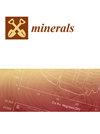马塞韦矿区铂矿床的创新地震成像:地表和矿内
IF 2.2
4区 地球科学
Q2 GEOCHEMISTRY & GEOPHYSICS
引用次数: 0
摘要
Maseve 矿位于布什维尔德复合体的西缘,是世界上最大的层状火成岩侵入体。该研究显示了地表(SP1、SP2 和 SP3)和隧道(T3a、T3b 和 TP4b)反射地震剖面的结果,总长度达 4150 米。隧道地震数据是使用地震陆上流体仪和尖头检波器采集的,接收器和射孔间距为 5 米,由于空间限制和安全原因,还使用了大锤进行射孔。剖面位于矿床上方 10-50 米处,穿过主要地质结构。地表地震剖面使用有线系统和无线传感器,接收器间距分别为 5 米和 10 米,并使用 500 公斤重的落锤作为震源,发射间距为 10 米。尽管矿山基础设施和电力电缆的噪音水平较高,但仔细的处理工作流程增强了目标反射。利用井眼数据、地质模型和二维/三维地震建模对解释进行了约束。处理后的数据显示了与断层和堤坝相关的缓倾斜反射,成像了目标矿化(梅伦斯基礁和上组 2)和可能的延伸。隧道地震实验证明了地震方法在矿内基础设施中的应用,而地表实验则证明了其高效性,说明了小型地震勘测对次表层成像的能力,为在活跃的采矿环境中使用成本效益高的地震设备进行勘探增添了价值。本文章由计算机程序翻译,如有差异,请以英文原文为准。
Innovative Seismic Imaging of the Platinum Deposits, Maseve Mine: Surface and In-Mine
Maseve Mine is located in the western limb of the Bushveld Complex, recognized as the largest layered igneous intrusion in the world. The study shows results from surface (SP1, SP2, and SP3) and tunnel (T3a, T3b, and TP4b) reflection seismic profiles, totaling 4150 m. Tunnel seismic data were acquired using a seismic landstreamer and spiked geophones with 5 m receiver and shot spacing, as well as a sledgehammer for shots due to space constraints and safety. The profiles, 10–50 m above mineral deposits, crossed major geological structures. Surface seismic profiles used cabled systems and wireless sensors with 5 m and 10 m receiver spacing, respectively, and a 500 kg drop hammer as a source with 10 m shot spacing. Despite high noise levels from mine infrastructure and power cables, a careful processing workflow enhanced target reflections. Interpretation was constrained using borehole data, geological models, and 2D/3D seismic modeling. The processed data exhibit gently dipping reflections associated with faults and dykes, imaging the target mineralization (Merensky Reef and Upper Group 2) and a possible extension. Tunnel seismic experiments demonstrated the application of seismic methods using in-mine infrastructure, while surface experiments proved efficient, illustrating small-scale seismic surveys’ capability to image the subsurface, adding value in active mining environments for exploration with cost-effective seismic equipment.
求助全文
通过发布文献求助,成功后即可免费获取论文全文。
去求助
来源期刊

Minerals
MINERALOGY-MINING & MINERAL PROCESSING
CiteScore
4.10
自引率
20.00%
发文量
1351
审稿时长
19.04 days
期刊介绍:
Minerals (ISSN 2075-163X) is an international open access journal that covers the broad field of mineralogy, economic mineral resources, mineral exploration, innovative mining techniques and advances in mineral processing. It publishes reviews, regular research papers and short notes. Our aim is to encourage scientists to publish their experimental and theoretical results in as much detail as possible. There is no restriction on the length of the papers. The full experimental details must be provided so that the results can be reproduced.
 求助内容:
求助内容: 应助结果提醒方式:
应助结果提醒方式:


